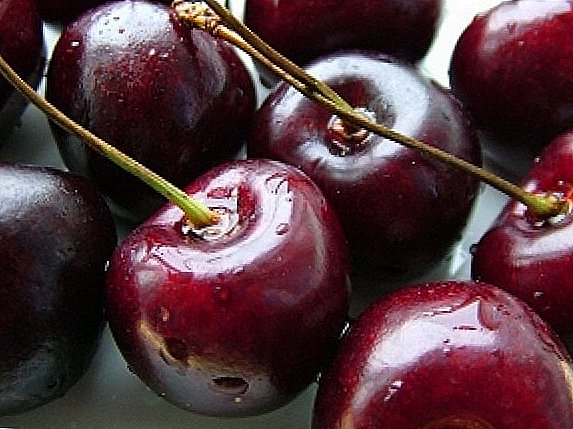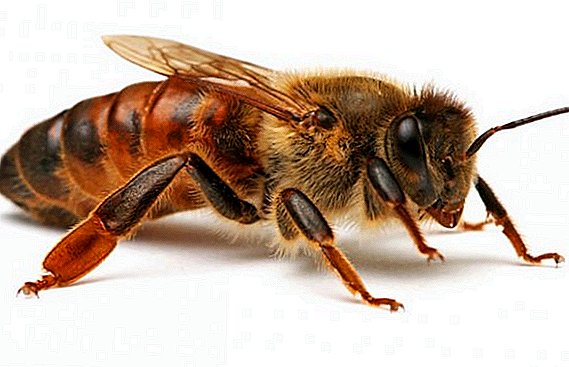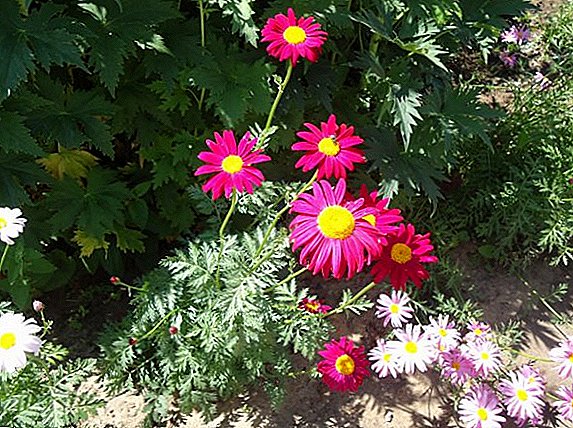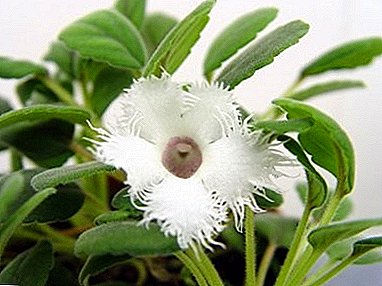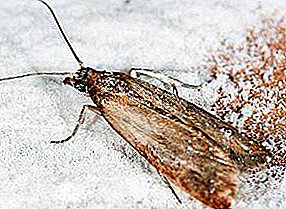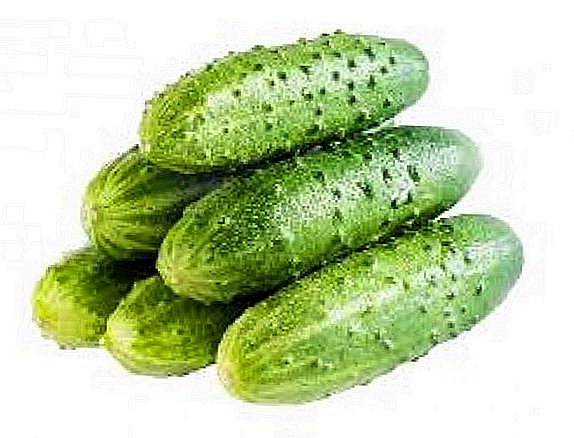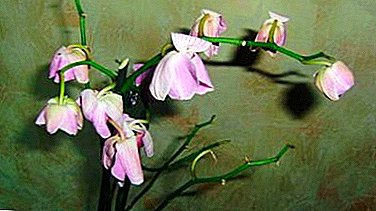
Indoor flower, like any living organism, depends on a number of factors. When everything is good and everything is enough, he has a healthy, blooming look. Suddenly the flowers wither and fall.
Obviously, the orchid went into survival mode. What caused this phenomenon, and how to help the poor plant, we will understand further.
How long does a normal bloom last?
The duration of the flowering process from budding to drying out lasts at least 30 days and a maximum of 10 months.
 It all depends on age, variety and growing conditions. An adult blooms on average about three monthsand a young one is not more than one. Thus, the orchid may well bloom several times a year, and in intervals it can be restored.
It all depends on age, variety and growing conditions. An adult blooms on average about three monthsand a young one is not more than one. Thus, the orchid may well bloom several times a year, and in intervals it can be restored.
For example, the most common variety of orchids - phalaenopsis can have flowers throughout the year.
The flowering of the dendrobium falls in the middle of autumn and lasts until the middle of winter. Cymbidium blooms from October to February, and the second time in summer.
What does a sluggish plant look like?
Wilting is the process by which a plant loses its elasticity., fortitude, vitality. The leaves and flowers become soft, the turgor disappears, the color changes to dark green. The top of the plant is leaning down.
Young shoots and stems become similar to a rag. The orchid stops growing and outwardly decreases in size. We do not notice when one flower wilted. But it becomes especially pitiful when both flowers and buds wither. Therefore, it is important to take urgent measures to eliminate the causes.
Why petals began to dry out at the same time?
Full-bloomed inflorescences of orchids are kept on the peduncle for 2-3 weeks. Rare varieties delight the eye for more than a month. With natural wilt, flowers fall off gradually, according to the degree of aging. First wither inflorescences, blooming first. However, if all the petals begin to disappear at the same time - this should alert. Drying the buds on the peduncle also indicates the presence of obvious health problems for the orchid.
We offer you to watch a video about why orchid flowers wither and fall down:
What are the buds falling off without breaking up?
It is difficult to watch when the unblown flowers start to dry up and fall off on the beloved one. There are many reasons for this unusual behavior of the orchid. It is important to understand them carefully.
Wrong watering
 Lack of moisture for the orchid is possible only in the absence of watering. Tropical flower requires a minimum amount of water to maintain vitality. Liquid is a kind of solvent minerals that are in the soil and nourish the root system.
Lack of moisture for the orchid is possible only in the absence of watering. Tropical flower requires a minimum amount of water to maintain vitality. Liquid is a kind of solvent minerals that are in the soil and nourish the root system.
However, it should not be abused with watering. Excessive moisture is fraught with the development of rot and related infectious diseases. The nutritional function is inhibited, the diseased plant draws moisture from the buds and flowers. Orchid, damaged by rot, loses roots and foliage. Behind the leaves buds fade.
We offer to watch a video about falling flowers on the orchid due to improper watering:
Lack of lighting or sunburn
With the arrival of the season of cold and rain, the sunlight of the orchid is lacking. Ideally, they need a 14-hour light day. Such intensity of light is possible in greenhouses. At home, these parameters are difficult to recreate. Therefore, without additional lighting, the flowers begin to wither, turn yellow, fall off.
In the summer season, the opposite is true. Bright sun can play a cruel joke. Scorching rays even at high temperatures on the streets leave dark spots on the leaves and inflorescences. The so-called thermal burns.
We offer to watch a video about falling flowers on the orchid due to insufficient lighting:
Root system overheating
 The homeland of orchids is tropics, so it’s not surprising that they love warmth. In the wild, they hide from the sun in the shade of large trees on which they grow.
The homeland of orchids is tropics, so it’s not surprising that they love warmth. In the wild, they hide from the sun in the shade of large trees on which they grow.
In terms of apartments, unfortunately, often overheat. No need to leave the plants in the winter near the heating radiator, and in the summer under direct rays or hot air from the air conditioner.
High ambient temperatures cause moisture to evaporate. from the ground. The roots wither, weaken. For a short period of time, the flowers wither and the buds fall off.
Draft
Arranging airing in the rooms is a good thing. Thus, air circulation is provided. However, airing and draft are different things. Draft is dangerous even to people, not to mention plants. The flow of cold air is a common cause of flaccid flowers.
Airing should not be done unless the plant has been wetted or sprinkled.
We offer to watch a video about falling flowers on the orchid due to the draft:
Low humidity and high temperature
The combination of these parameters leads to negative consequences for orchids. If it is in a room where bright sun shines brightly and high temperature. Of course, the flower is hot, and a large volume of liquid evaporates from the green mass. In addition, an exotic plant can not be fed in full with water, hence the lethargy, loss of turgor, the death of unblown flowers. The maximum level of humidity is 30-40%.
We offer to watch a video about falling flowers on the orchid due to low humidity:
Stress
Relocation for orchids does not pass without a trace. After all, this becomes a different lighting, humidity, temperature. And the capricious plant will react that hour. For a while it can stop blooming, reset buds. However, in the future, provided that the exotics like the new conditions, everything will be fine. Just orchids need a period of adaptation.
Hypothermia
 When caring for orchids, you need to be especially careful in the winter.
When caring for orchids, you need to be especially careful in the winter.
It happens that after wetting, cold air enters the flower when a wet plant is taken out onto a balcony, a window is opened for airing, or placed on a windowed window sill. Hypothermia is a rather dangerous phenomenon.. As the vessels passing through the center of the leaf plate and to the roots are destroyed. Stimulates the development of such diseases rot.
The general overcooling of an orchid negatively affects leaves, roots, flowers.
Insect damage
Another common problem for orchids is pests.. This happens often enough, so the owner must regularly inspect the leaves and roots.
The better to handle?
Harmful insects are especially dangerous for beginners.who buying a flower in the store, do not even think to examine it. Put on the windowsill next to other plants. Similarly, malicious insects appear at home. And if the comfortable parameters of the indoor microclimate are still maintained, then it is not easy to bring such neighbors.
Folk remedies
When pests are found on orchids, the first step is to resort to using proven, natural remedies. They are harmless and more benign to the flower.
Most often used:
- laundry soap;
- onion or garlic decoction;
- tinctures on citrus peel, calendula, mint;
- various essential oils.
Chemicals
As a rule, folk remedies are used in the early stages, if the number of insects on a flower is not large. However, if the process is started, and the pests live well and feed on the juice of exotic water, the use of chemicals is necessary. The most effective drugs for the destruction of harmful insects are flowers and insecticides.. They are divorced according to the instructions on the package and are used as intended.
What to do - step by step instructions
Before embarking on radical measures, you need to try to normalize the parameters of the microclimate:
 Change the location of the orchid or priten the scorching sun.
Change the location of the orchid or priten the scorching sun.- Cover working radiators if the pot is placed on the windowsill.
- Increase humidity with a household humidifier.
- Water the orchid with warm water if there are visible signs of drying out.
- Eliminate the ingress of cold air and drafts.
- Make sure there are no harmful insects on the flower. You may notice sticky traces of the worm on the leaves.
If the above preventive measures have not yielded positive results, it is possible that the problem lies in the excessive moistening of the substrate, then follows:
- get an orchid from a pot;
- rinse the roots with running water;
- remove unhealthy, rotten areas with a sharp instrument;
- open wounds with activated carbon;
- leave to dry for a while;
- change the substrate for the orchid, not forgetting the drainage layer 2 cm thick;
- further water only after the soil dries.
How to help if the buds quickly crumbled, without opening?
Blooming of buds occurs most often when the plant is sick.
Orchid flower growers should know how to help with shedding buds. This is a very sad sight, and most likely the reason is serious. After all, experienced people are unlikely to allow missteps in the care during the budding period. therefore for amateurs it is advised to first check the conditions of the content of exotic. The next stage - the definition of the disease and treatment methods:
- prepare a sterilized pruning tool;
- remove the plant from the pot;
- leave the roots in warm water for a couple of hours;
- conduct a thorough inspection and pereschupat the entire root system;
- remove damaged areas with a previously prepared tool;
- sprinkle the slices with an antiseptic agent that does not contain alcohol;
- if there are suspicions or visible symptoms of infectious diseases, process the flower with a systemic fungicide;
- transplant the orchid in a new soil and, if possible, in another pot;
- if everything is in order, the condition of the flower will not deteriorate, you can water it in a week;
- feed a slightly concentrated solution of mineral fertilizers after 2 weeks.
How to prevent falling in the future?
In order to save the beauty from various troubles in the future, it is necessary to strictly adhere to the rules for care.
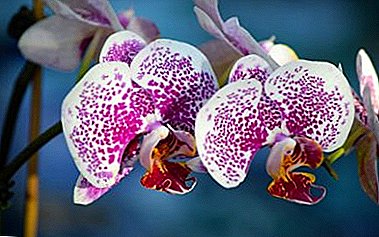 Do not allow heat in the place of growth.
Do not allow heat in the place of growth.- Comfortable temperature + 22-25ºС.
- The difference in temperature differences should not exceed 4-6ºС.
- Daylight duration 14 hours.
- In winter time it is necessary to add light to fitolamps.
- Natural lighting is required scattered.
- It is desirable to maintain high humidity, but not more than 80%.
- Be sure to air the room regularly.
- During the development of buds watering cut.
- Do not spray the flower during flowering.
- Apply filtered water.
- Fertilize orchids need during the growth of the spike.
- Top dressings to use with the preferential content of potassium and iron.
Room pet directly depends on natural moments: the sun, water, temperature, soil. But no less important is human care and attention, as well as the ability to understand the signals that it sends.


 Change the location of the orchid or priten the scorching sun.
Change the location of the orchid or priten the scorching sun. Do not allow heat in the place of growth.
Do not allow heat in the place of growth.
